Holy Rosary Parish of Angeles City, Pampanga
Last lent, we were able to visit seven churches in Pampanga. I have been aiming to visit this town for a long time and I am happy that I finally got the chance to see some of the most beautiful churches in the country. This is not a bold claim at all because Pampanga is indeed the home of some uniquely, intricately, and beautifully detailed churches in the Philippines. The last church I have visited in Pampanga is The Sunken Shrine or the Archdiocesan Shrine of Our Lady of Lourdes in Bacolor.
The first church on our list is the Holy Rosary Parish in Angeles City, Pampanga. Located at the heart of the city is this enormous church dedicated under the patronage of the Most Holy Rosary. It is popularly known to the locals as “Pisambang Maragul”, a Kapampangan term that literally means “Big Church”.
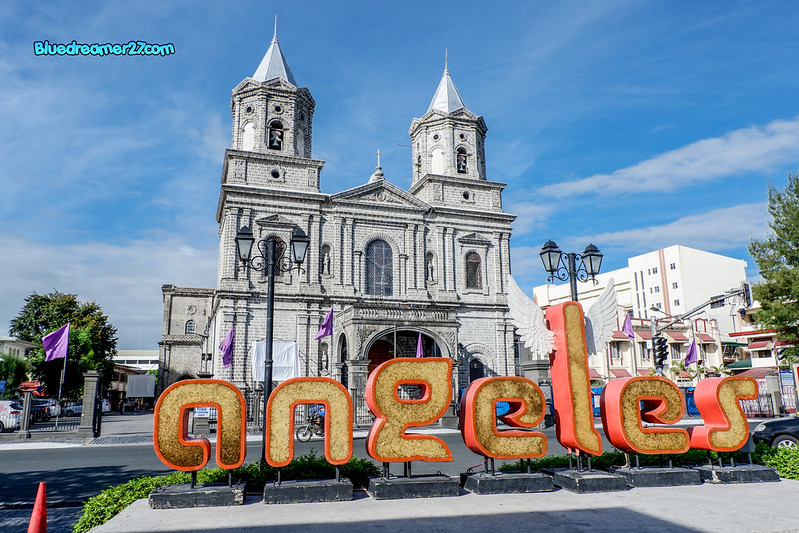
Before it became a separate municipality, Angeles City was formerly part of San Fernando. It was until Don Ángel Pantaleón de Miranda (the town’s gobernadorcillio at that time) along with his followers staked out a new settlement which later became known as Barrio Culiat (Culiat are coarse woody indigenous vines abundant in that area, hence the name). The new settlers cleared the woodland and cultivated the area for rice and sugar farming. Since then, Don Angel made several attempts and filed petition to make Culiat a separate municipalities. Initial attempts, however, where denied.
The last petition was filed by Don Angel along with his son-in-law, Mariano Henson, and the latter’s father, Severino Henson. He donated 35 hectares for the construction of the first Catholic church, a convent and a primary school while Doña Agustina Henson de Nepomuceno, the niece of who would become the first gobernadorcillo of Angeles in 1830, Don Ciriaco de Miranda, gave land for the new public market. Don Ángel paid the complete amount required by law just for the secession of Culiat from San Fernando.
In December of 1829, the barrio Culiat finally became a separate municipality and was soon renamed as “El Pueblo de los Ángeles” or The Town of Angels in honor of Holy Angels (the town’s patron saints) and the name of its founder Don Angel. The construction of the first church took place in October of 1877 and was placed under the patronage of Our Lady of the Most Holy Rosary. It is also interesting to note that the church was constructed via “polo y servicio” labor system (forced and unpaid labor during the Spanish occupation)

When we get there last year, the church is still under construction. It was utterly damaged by the earthquake in 2019. The facade is almost clear but the interior of the church is still in major repair. The church features a Renaissance style of architecture. Probably one of the most notable features of the church is the twin bell tower.
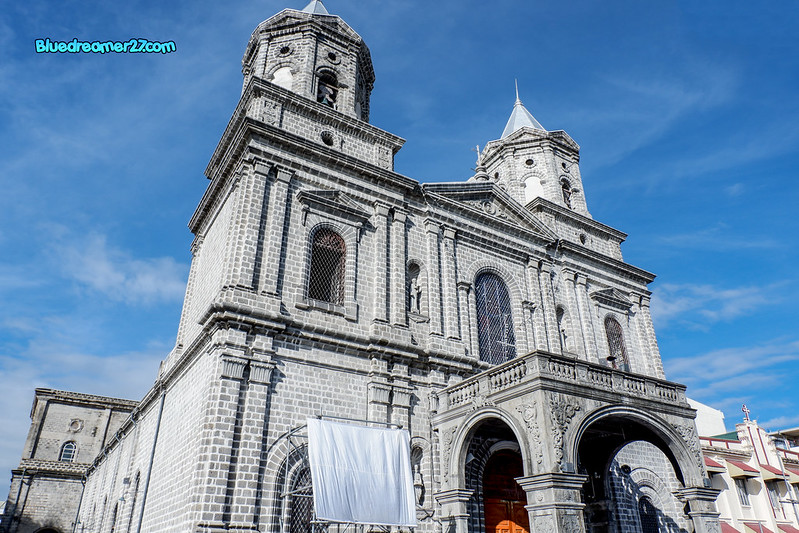
The facade comes with a porch and several niches with grilled windows. The center niche comes with a stained-glass window with image depicting Our Lady of the Most Holy Rosary. Between the windows are small niches featuring the four Evangelists.

The first mass was held when only half of the church was built on April 14, 1886. The twin bells were rung for the first time on February 12, 1896. The church was finally finished as it still stands today in October 1909.

One of the twin bell towers
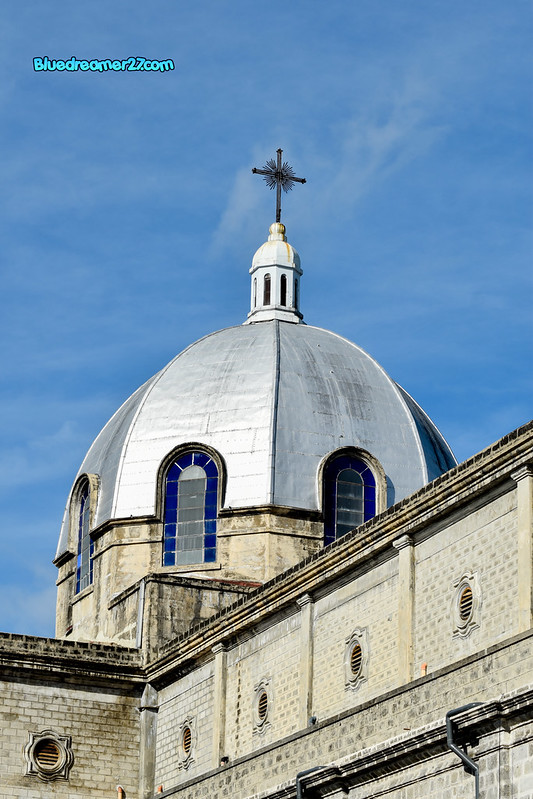
Holy Rosary Parish Church’s distinctive dome
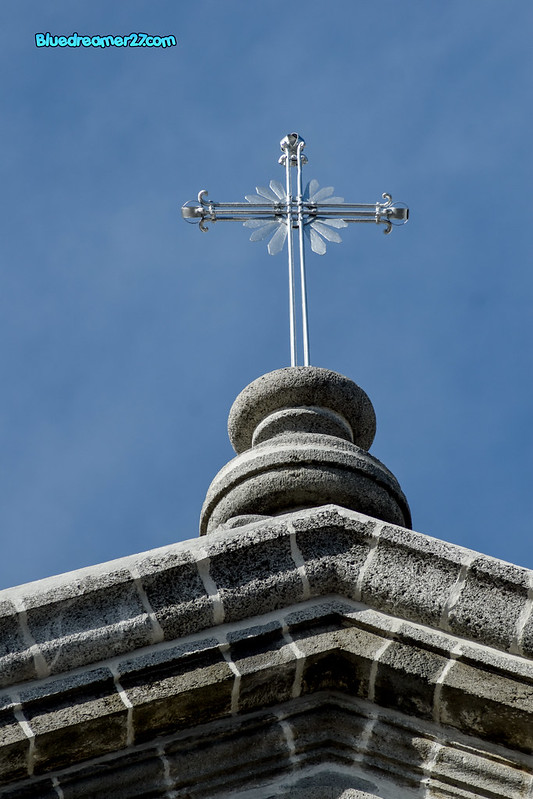
The cross on the church’s pediment
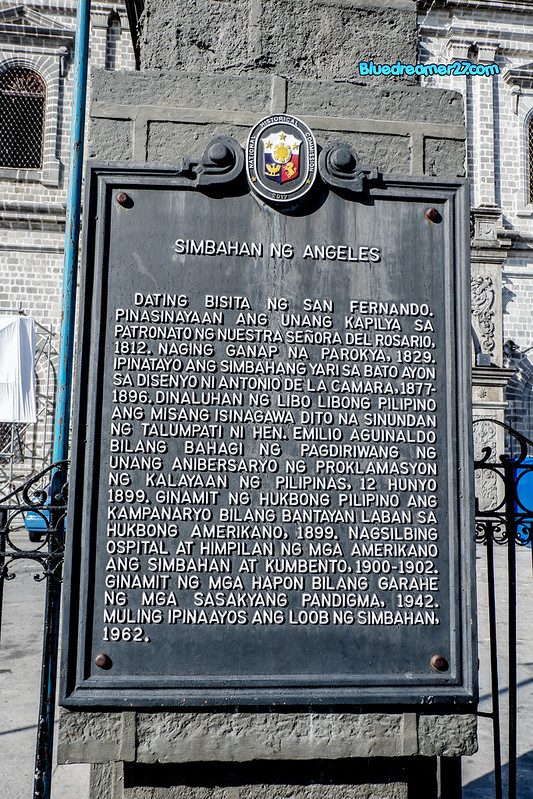
The Church’s historical market near the main entrance. It is interesting to note that Holy Rosary Parish also has huge historical significance. The backyard of the church became the execution grounds from 1896-1898 during tensions between Filipino rebels and the Spanish forces. The church was also used by the U.S. Army as a military hospital from 1899 to 1900. During WWII, the church’s belfry was destroyed. It was restored by the government with the help of American troops and was finished by early 1944.

Another marker near the main entrance written in Kapampangan
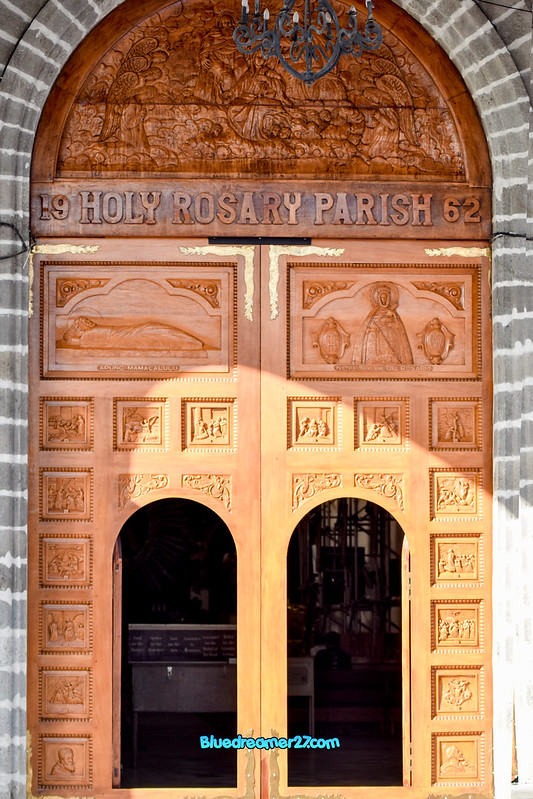 The main door
The main door
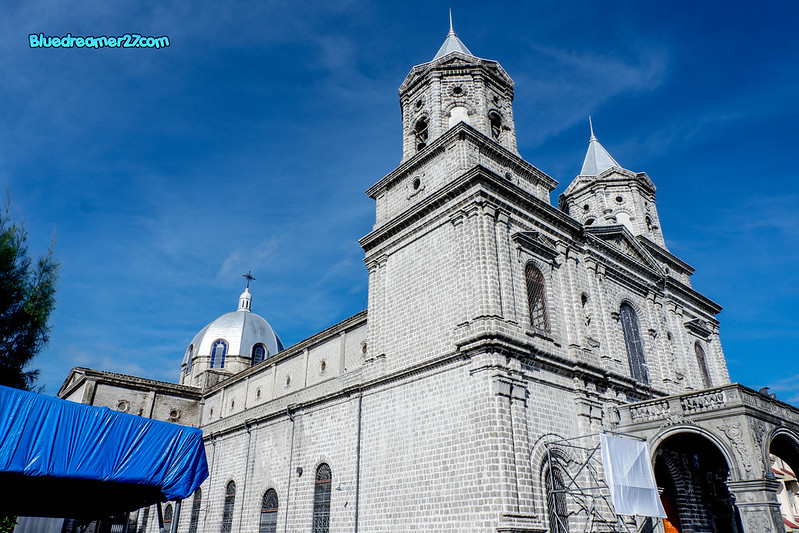
The church’s structure in a different angle showcasing its twin towers and dome
 Although the church’s interior was filled with scaffoldings, we can still see its majestic beauty.
Although the church’s interior was filled with scaffoldings, we can still see its majestic beauty.

Here’s a church photo prior to the current reconstruction. Photo taken from Don Trivino
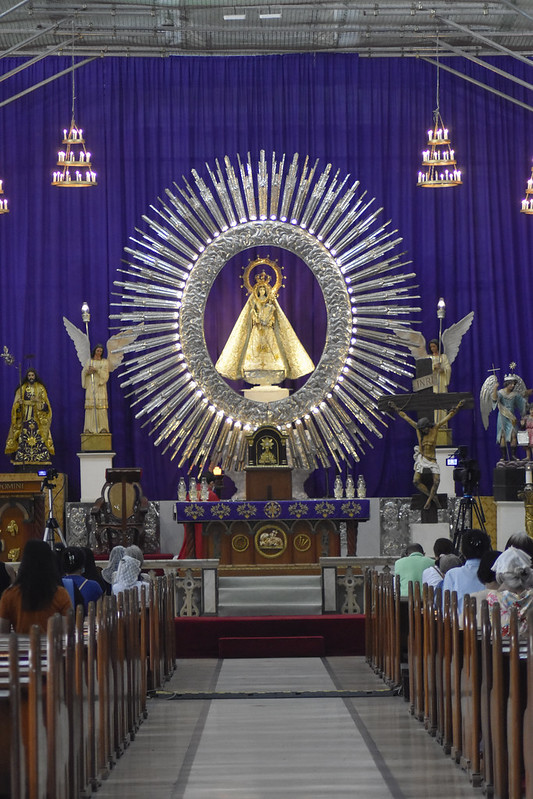
The first thing you’ll notice as you enter the church is the beautiful Sunburst altar that enshrines the image of Our Lady Of the Holy Rosary

Although the town’s titular patron are the Holy Angels, there are many reasons why the church was placed under the patronage of Our lady of the Holy Rosary. They said that Doña Rosalia de Jesus (the wife of Don Angel) was a devotee of Our Lady of the Rosary and she used to bring the image in Barrio Culiat to ask her protection from the attacks of Aetas in the area
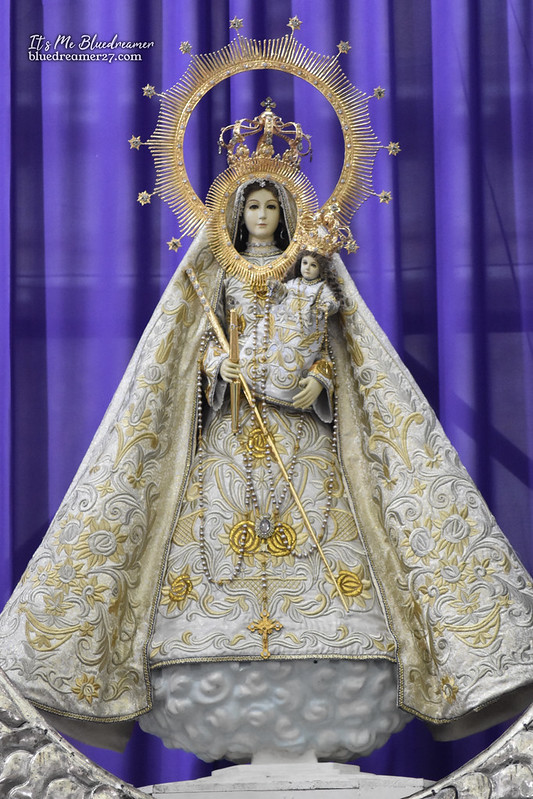 In commemoration and honor of the Virgin of La Naval de Manila and to give honor to Our Lady whose intercession helped on the successful separation of Culiat from San Fernando, Angeles City celebrates the so-called “La Naval Fiesta” or “Fiestang Naval” every month of October.
In commemoration and honor of the Virgin of La Naval de Manila and to give honor to Our Lady whose intercession helped on the successful separation of Culiat from San Fernando, Angeles City celebrates the so-called “La Naval Fiesta” or “Fiestang Naval” every month of October.
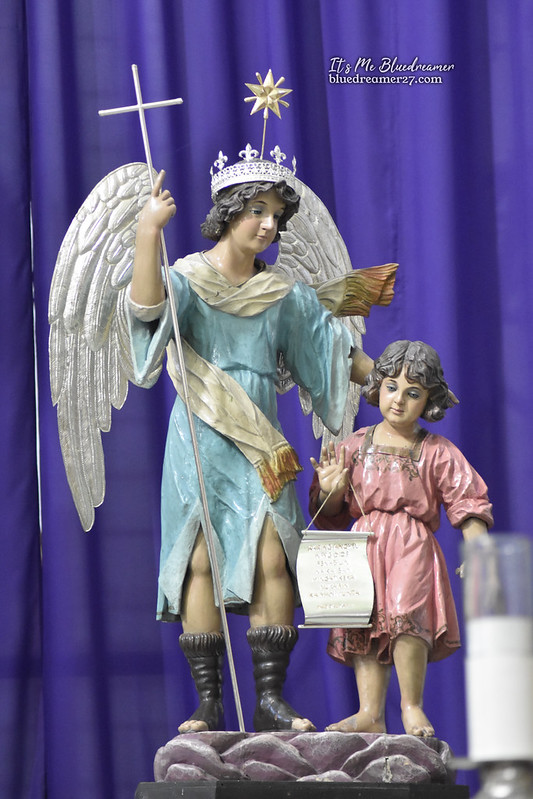 Santo Angel Custodio, the titular patron of Angeles City
Santo Angel Custodio, the titular patron of Angeles City

The image of crucified Christ
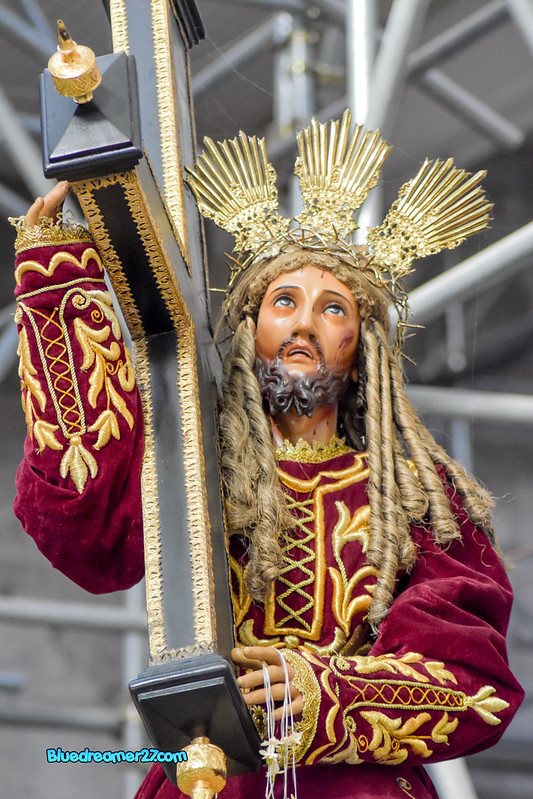
Jesus Nazareno
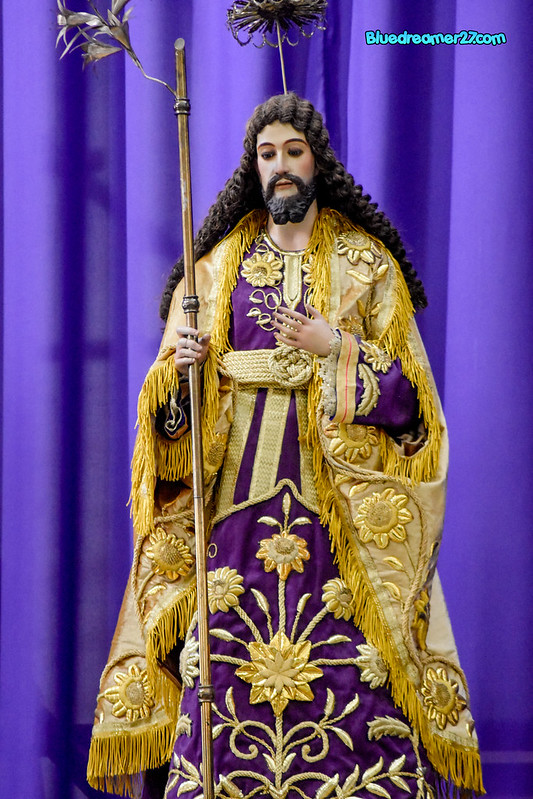
Saint Joseph
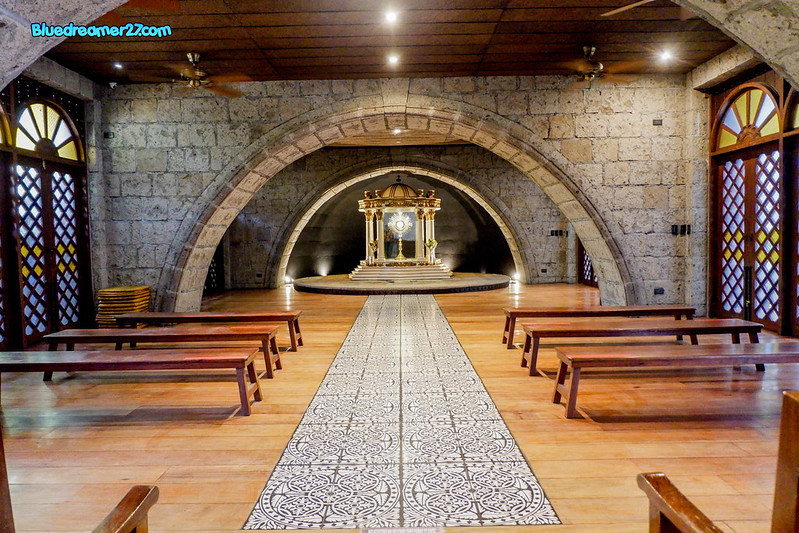
At the back of the church, you’ll find a spacious Adoration chapel
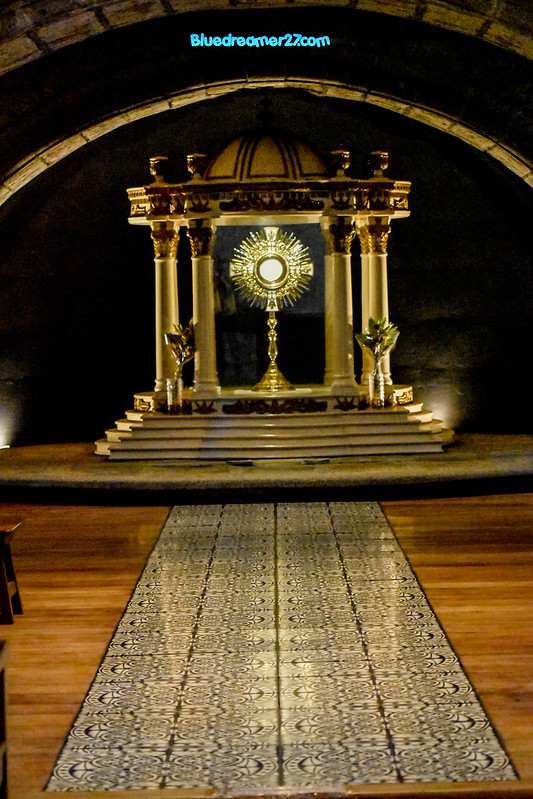
The blessed Sacrament
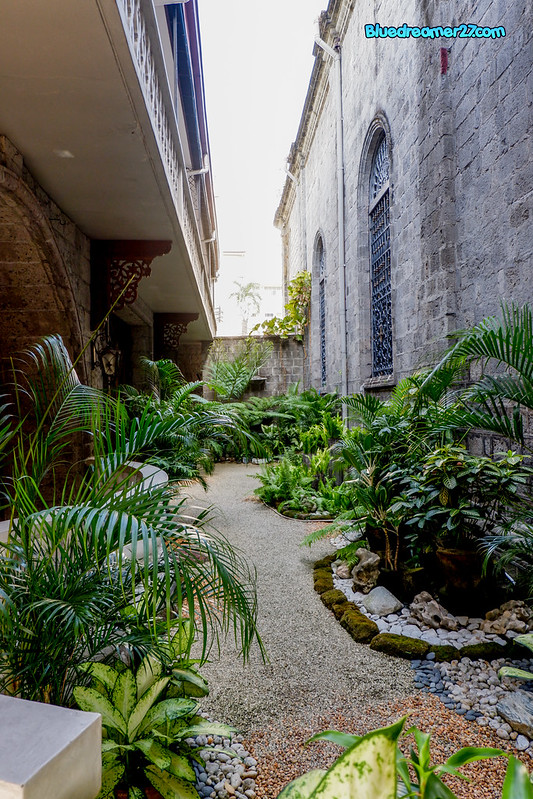
Beautiful Landscape in between the church and the adoration chapel
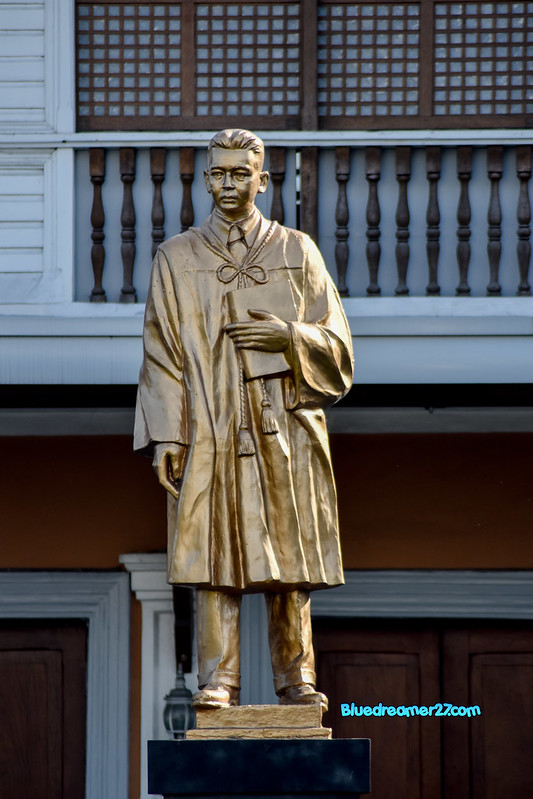 In front of the church is the Museo Ning Angeles but it was closed at that time. You can also find a statue of Jose Abad Santos in front of the museum. Jose Abad Santos was born in Pampanga.
In front of the church is the Museo Ning Angeles but it was closed at that time. You can also find a statue of Jose Abad Santos in front of the museum. Jose Abad Santos was born in Pampanga.
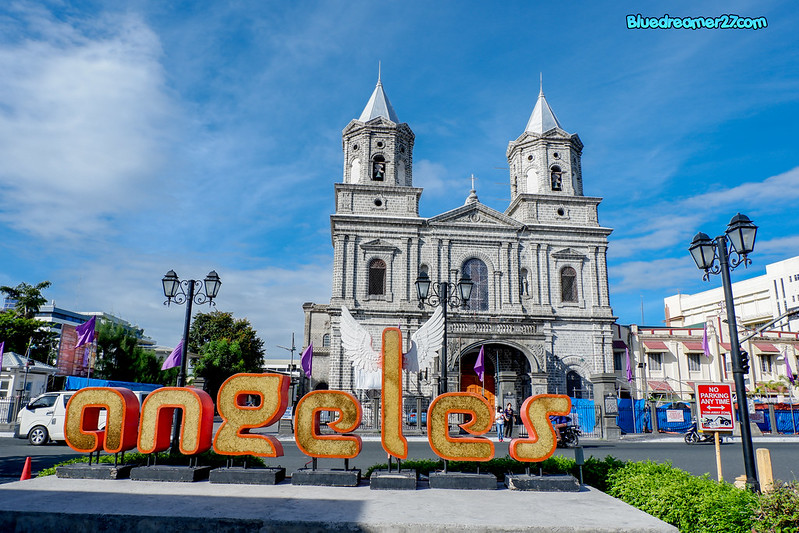
The church building, by the way, is recognized by the National Commission for Culture and the Arts as a national historical site and as an important cultural property by the National Museum of the Philippines
This Post is part of my Pampanga Pilgrimage series. Feel free to revisit my previous articles here
- A Pilgrimage to Pampanga: A Visit to Seven Beautiful Churches in Pampanga
- Holy Rosary Parish Church (Big Church) of Angeles City, Pampanga
- Apung Macalulu Shrine of Angeles City, Pampanga
- San Fernando Cathedral, San Fernando, Pampanga
- San Guillermo Parish of Bacolor, Pampanga
- Museo de Bacolor
- Betis Church of Guagua, Pampanga
- Santa Catalina de Alejandria Parish of Arayat, Pampanga
- Kabigting Halo-Halo of Arayat
- San Pedro Apostol Parish of Apalit Pampanga
References: Philstar / Business Mirror / Guide to Philippines / Pintakasi


